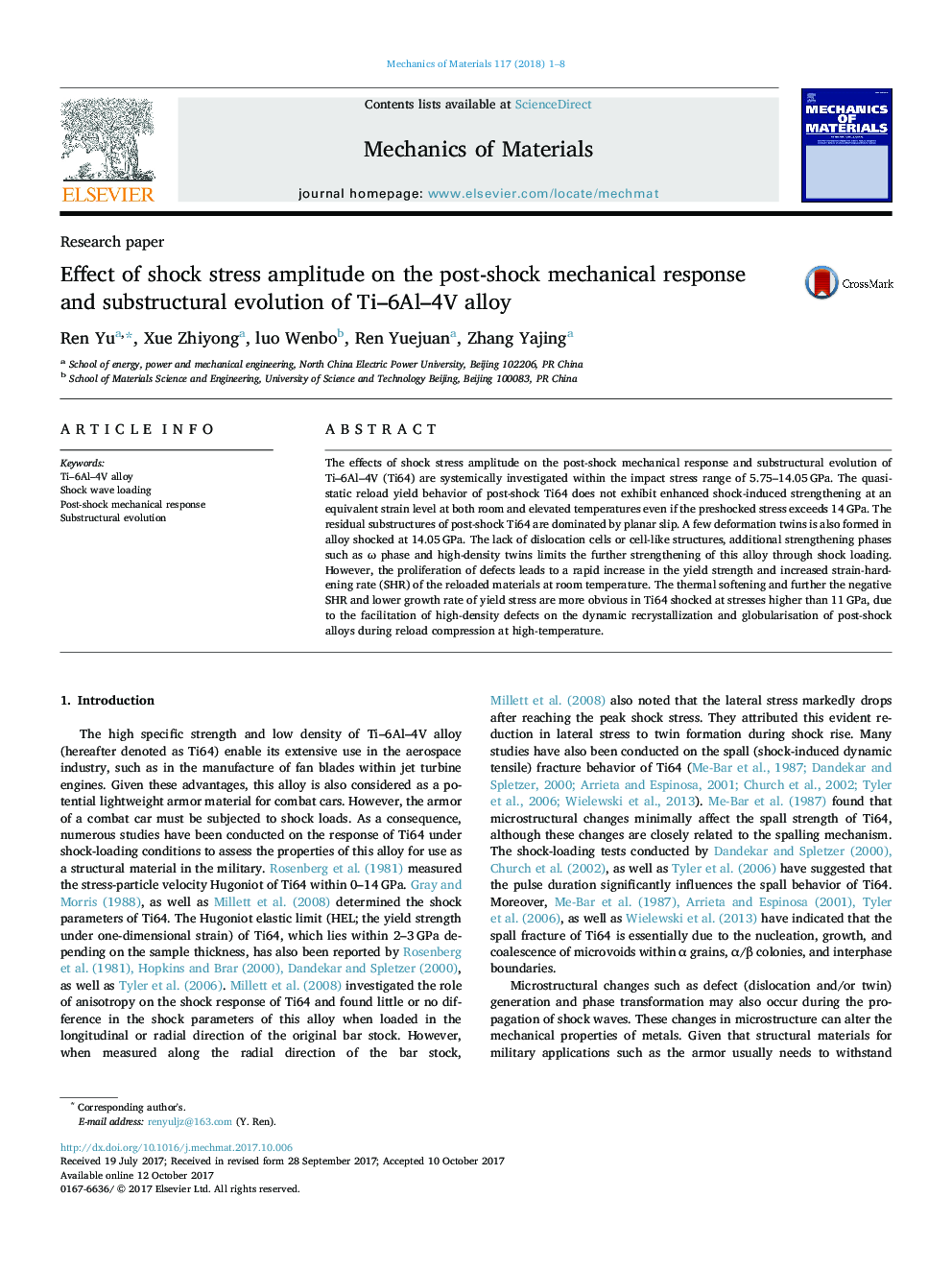| Article ID | Journal | Published Year | Pages | File Type |
|---|---|---|---|---|
| 7178560 | Mechanics of Materials | 2018 | 8 Pages |
Abstract
The effects of shock stress amplitude on the post-shock mechanical response and substructural evolution of Ti-6Al-4V (Ti64) are systemically investigated within the impact stress range of 5.75-14.05â¯GPa. The quasi-static reload yield behavior of post-shock Ti64 does not exhibit enhanced shock-induced strengthening at an equivalent strain level at both room and elevated temperatures even if the preshocked stress exceeds 14â¯GPa. The residual substructures of post-shock Ti64 are dominated by planar slip. A few deformation twins is also formed in alloy shocked at 14.05â¯GPa. The lack of dislocation cells or cell-like structures, additional strengthening phases such as Ï phase and high-density twins limits the further strengthening of this alloy through shock loading. However, the proliferation of defects leads to a rapid increase in the yield strength and increased strain-hardening rate (SHR) of the reloaded materials at room temperature. The thermal softening and further the negative SHR and lower growth rate of yield stress are more obvious in Ti64 shocked at stresses higher than 11â¯GPa, due to the facilitation of high-density defects on the dynamic recrystallization and globularisation of post-shock alloys during reload compression at high-temperature.
Keywords
Related Topics
Physical Sciences and Engineering
Engineering
Mechanical Engineering
Authors
Ren Yu, Xue Zhiyong, luo Wenbo, Ren Yuejuan, Zhang Yajing,
